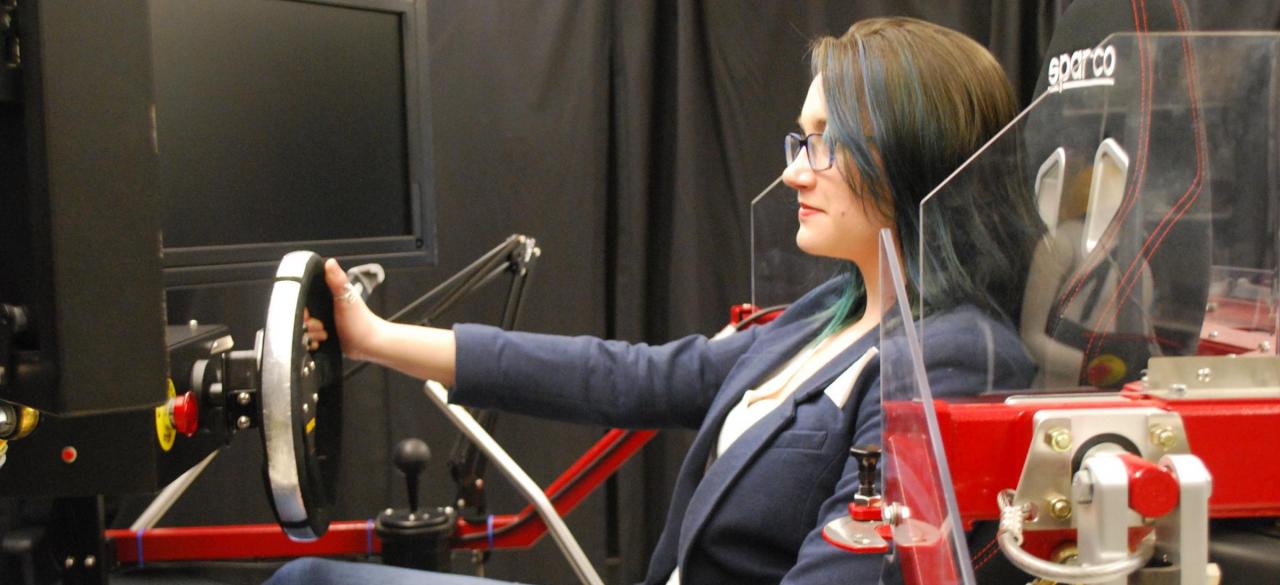Understanding Driver Awareness for Smart Vehicles

ABOUT THE PROJECT
At a glance
One aspect of autonomous vehicles that is extremely difficult is the data collection process, particularly when dealing with human drivers in possibly dangerous scenarios (e.g. distracted driving). In order to model the driver state and assess awareness, the team will use a motion car simulator that has been outfitted for driver monitoring to assess a driver’s gaze and map this to awareness of the environment (initally using MS Kinect). By assessing the gaze, the team can determine whether the driver is looking at the road or at a distraction. A key aspect of modeling driver’s interaction with a controller is in understanding reaction capabilities. In order to study this, the team will use sensor motes, previously developed by the team, to assess the dynamics of the person and understand the boundaries and distribution of a driver’s reaction time.
Once the data has been collected and properly represented, the following high-level algorithm could be used:
- Using models that build off of previous work, reachable set-like methods can be used to determine whether the driver is likely to violate safety constraints and cause the autonomous vehicle to take control
Once the vehicle is safe, switch back to human control, assuming that the human is paying attention and the human’s reaction time is sufficient
In collecting the data and exploring these driver models that are linked to control principles, the team will be able to design more robust systems that are designed around the driver to improve safety and acceptance.
By studying the driver’s awareness and reactions to various scenarios, a better active safety system can be created. In doing so, the team will work to address many open problems, including:
How can we link driver models and control in a robust manner?
What are important and robust cues in handling the switching from human to autonomous control?
When can we guarantee that the human is ready to assume control of the vehicle after the autonomous controller has taken over?
The main goal of the project is to improve the understanding of human drivers, a critical component for smart vehicles to reduce the effects of human error.
| Principal Investigators | Researchers | Themes |
|---|---|---|
| Ruzena Bajcsy | Erickson Nascimento, Katherine Driggs-Campbell, Vijay Govindarajan | Autonomous Vehicles |

